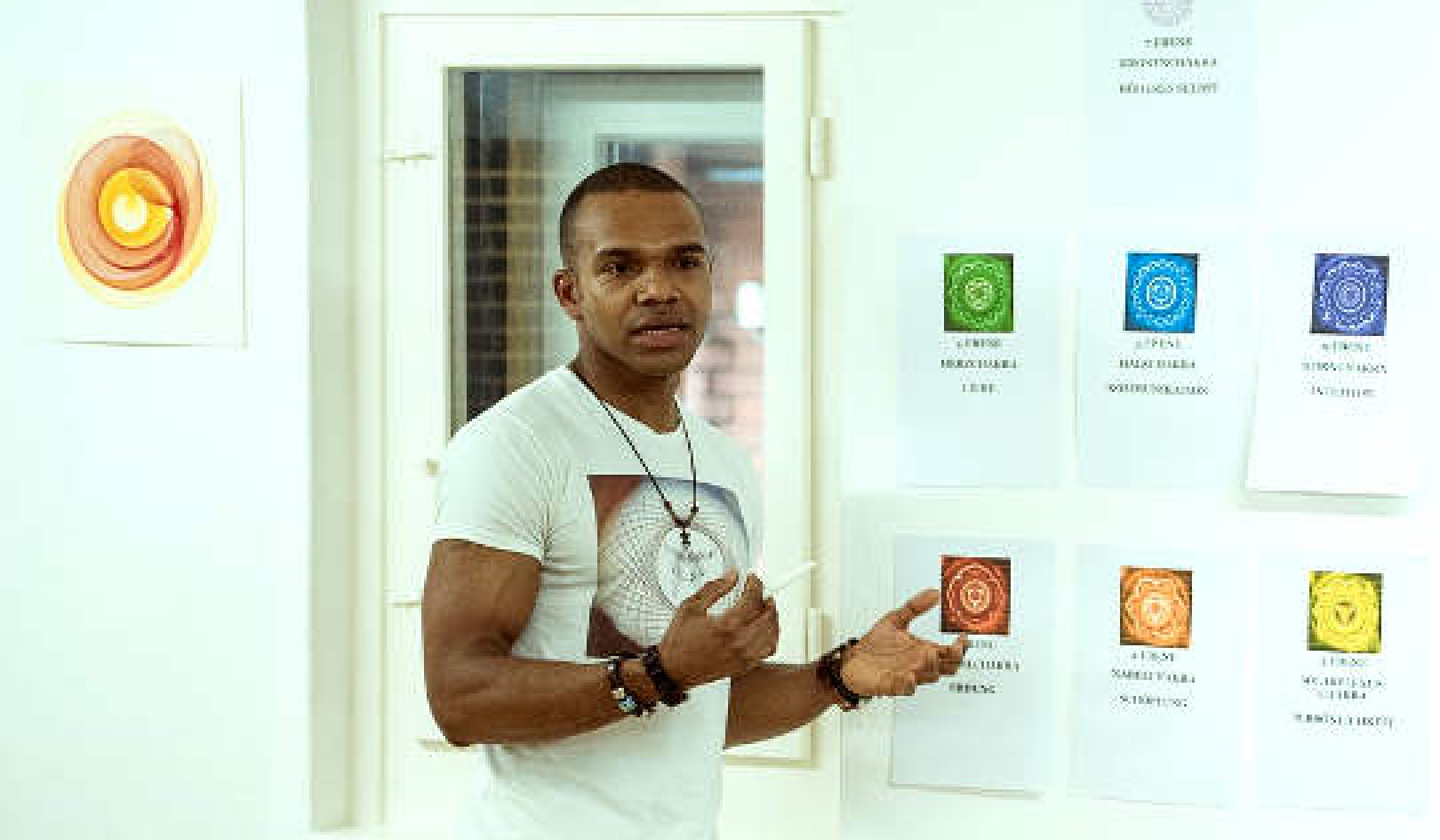
When meditation is being discussed, the first image that comes to mind is someone sitting rigidly, eyes closed, focusing on breath. Indeed, this meditation technique is very popular, but there are hundreds of other techniques that may prove to be as useful for you.
Every meditation technique has its unique characteristics, and invites you to experience meditation in a different way. They all invite you to direct your attention at one focal point, but these focal points may be essentially different. Each meditation technique provides a unique focal point that delivers a distinctive invitation; your willingness to accept the invitation you are offered depends on the way you experience it, and the extent to which you are comfortable with it.
Love-Compassion-Acceptance Meditation
This branch of meditation techniques deepens one’s awareness in a manner that enhances unconditional love, acceptance, and compassion. This is the undercurrent flowing within the Authentic Self, and these meditation techniques invite us to swim in this river of unconditional love that lies within us.
A popular example of these techniques is the Loving-Kindness Meditation (LKM). Unlike mindfulness meditation, where we focus our awareness on the present in an open-minded and non-judgemental manner, LKM encourages us to focus our awareness on warm tender feelings, open-heartedly. A study gave a seven-week workshop of LKM meditation to 140 participants.
Practicing the LKM for the duration of the workshop increased the participants’ levels of positive emotions such as gratitude, hope, pride, contentment and love, while creating a stronger feeling of satisfaction with life. To practice the LKM follow the instructions below:
Sit comfortably. Any position will do. Close your eyes and take a few deep breaths. Inhale and exhale slowly, and consciously relax your muscles and prepare body and mind for deep awareness of love and compassion.
Choose a person you love. Choose someone who you love easily and naturally rather than someone for whom you feel an emotionally complicated love.
Focus on the area around your heart. Put your hand over your heart, in the center of your chest. Once you are able to focus on your heart, imagine breathing in and out through your heart. Take several deep breaths and feel your heart breathing.
Turn your attention to feelings of gratitude and love, warm and tender feelings, for the person you chose.
Send loving-kindness and compassion to yourself: Imagine that the warm glow of love and compassion coming from your heart is moving throughout your body. Send these feelings up and down your body. If verbal content is easier for you to connect to, you can repeat the following words: May I be happy. May I be well. May I be safe. May I be peaceful and at ease.
Send loving-kindness and compassion to family and friends: Imagine friends and family as vividly as you can, and send these feelings into their hearts. Imagine the warm glow of love and compassion that comes from your heart moving into their hearts. If verbal content is easier for you to connect to, you can repeat the following words: May you be happy. May you be well. May you be safe. May you be peaceful and at ease.
Expand the circle by sending your loving-kindness and compassion to neighbors, acquaintances, strangers, animals, and finally people with whom you have difficulty.
Imagine planet earth, with all of its inhabitants, and send loving-kindness and compassion to all living beings.
For ten minutes, keep your full attention on the sensations and feelings of loving-kindness and compassion. If your awareness has wandered immediately bring back your attention to those tender and warm feelings, smilingly.
Meditation Will Not Make You Passive
Students frequently tell me they fear that regular practice of meditation will make them sit passively, never moving anywhere. They are worried that meditation could detach them from life as they once knew it.
In reality, the only thing meditation detaches you from is your ego concepts, that is, your interpretation of life. Getting detached from one’s ego concepts means connecting with life. As a result of meditation you are thrown into life as it is. The main issue here is avoiding automaticity.
When you allow meditation to slowly penetrate into your way of being, you gradually stop reacting automatically to life. Automatic reactions prompted by your ego concepts no longer occupy space in your awareness and therefore you experience choice. That is exactly what I mean when I say Awareness Is Freedom: You become aware of the potential of each moment and stop reacting automatically out of your ego concepts.
The task of ego concepts is to make sure you are safe, secure, within your comfort zone. But life has so much more to offer, so many potential paths that are only revealed when the ego concept blinkers are removed.
Meditation Is Life Supporting
Meditation, therefore, does not work against life, it is rather life supporting; it takes the blinkers away and allows you to truly see whatever stands in front of you. This is crucial because that is the space where life’s opportunities lie.
Many people believe that no opportunities are available to them simply because they have been conditioned for so many years to observe life via the filter of their ego concepts. This filter allows you to see only the safe options, those that are within your comfort zone, and it is not surprising you may find life dull, grey, and meaningless. How could life be exciting and vibrant if its juice has been squeezed away by the filtering process?
Meditation creates a new inner space within which you can act and make choices. You are no longer a leaf in the wind, tossed around by your reactions to your ego concepts; now you become the wind, you can choose and navigate consciously because you set out from a calm and centered space within you.
Developing Meditation For Complex Daily Living
Meditation begins by inviting transcendence into the simplest circumstances, such as sitting or breathing by yourself. We begin with this straightforward task because when you begin your meditation practice your mind is so deeply conditioned to fluctuate that the slightest disturbance pulls your attention away, into the whirlwind of thought. As you practice and become more experienced you will find that you can perform increasingly complex tasks without being thrown out of the meditative state.
You begin by sitting down and breathing, then you may meditate while washing the dishes, walking on a busy street, and even if you are not alone in the room. These are more challenging forms of meditation as they require that you ignore many stimuli that are able to distract you or kick-start the thinking mind.
By practicing meditation in a less challenging environment, you slowly build up a “meditative resilience” that would allow you to remain centered in more complex situations. The ultimate, perhaps most challenging situation, is remaining present during communication with other people.
When we communicate with others we are rarely capable of being present, because the mind is flooded with so many stimuli triggering ego concepts. Osho, the spiritual teacher, used to ask his students to go out and meditate in the market place. Imagine sitting and meditating in the middle of this pandemonium. But there is an important lesson behind his request. Meditation is not meant to be experienced in isolation; it should be an integral part of life. Take meditation retreats, for example. These retreats are important as they allow a glimpse into the meditative state of no-mind and transcendence.
Many spiritual teachings recommend spending certain periods of time at retreats, and dedicating them to meditation in order to deepen the meditative experience. Many of these retreats are characterized by silence and sometime solitude. We can easily escape to the high mountains, to a cave, to a monastery – we might even reach an extended state of transcendence in such a place – but it would be an experience achieved under very specific circumstances. It would be similar to meditating alone in a room and claiming that you have mastered meditation.
Ultimately, you should be able to achieve transcendence at any moment of life, under any circumstances, whether easy or hard, at sad and happy moments. This is when the meditators leave their retreats, return to “real life”, and implement their newly-acquired skill in an environment that confronts them with their deepest ego concepts.
The skill of meditation is best applied in moments defined by your mind as difficult and challenging. By developing the skill on your own in a quiet space you slowly build it up in a way that allows you to implement it in more challenging situations. This would probably take time and patience, but you will eventually gather experience with meditation, and naturally develop your meditative skill.
By developing your skills of meditation you will also be able to remain in a meditative non-analytical state for longer periods of time. It is natural to awaken to the moment (be present) and then have it slip away again (become lost in your thoughts), and then awaken and fall asleep again. Enhancing awareness via the meditative experience will shorten the time between each awakening.
The meditative skill, as any other skill, develops through practice. When you first practice meditation you may discover that you are unable to focus non-analytically on your breath for more than about 30 seconds out of a ten-minute practice, and that your mind wanders for the other nine and a half minutes, and you will “catch” yourself thinking. That is completely natural.
As you practice, your skill of concentration will gradually improve and these 30 seconds will extend to 40 and then 50 seconds, until you are able to stay focused on your breath for long minutes without the interruption of thought. This practice might take a long time but every journey begins with a first step.
Consistent and regular practice will result in:
* A steadier meditative state (remaining in meditation for longer periods of time).
* An ability to meditate in complex and challenging situations.
Regular practice will expand your meditative experience in a natural way. You will gradually notice that meditation is touching moments and situations where you have hardly been present in the past. Be attentive to your life and you may find that many of your experiences are influenced by the meditative state in a way that is new and exciting.
Our body and mind are extremely flexible and transformable. All you have to do is practice consistently, and let things evolve naturally.
©2014 by Itai Ivtzan. All Rights Reserved.
Published by Changemakers Books.
Article Source
 Awareness Is Freedom: The Adventure of Psychology and Spirituality
Awareness Is Freedom: The Adventure of Psychology and Spirituality
by Itai Ivtzan.
Click here for more info and/or to order this book.
About the Author
 Dr Itai Ivtzan is passionate about the combination of psychology and spirituality. He is a positive psychologist, a senior lecturer, and the program leader of MAPP (Masters in Applied Positive Psychology) at the University of East London (UEL). If you wish to get additional information about his work or contact him, please visit www.AwarenessIsFreedom.com
Dr Itai Ivtzan is passionate about the combination of psychology and spirituality. He is a positive psychologist, a senior lecturer, and the program leader of MAPP (Masters in Applied Positive Psychology) at the University of East London (UEL). If you wish to get additional information about his work or contact him, please visit www.AwarenessIsFreedom.com



























